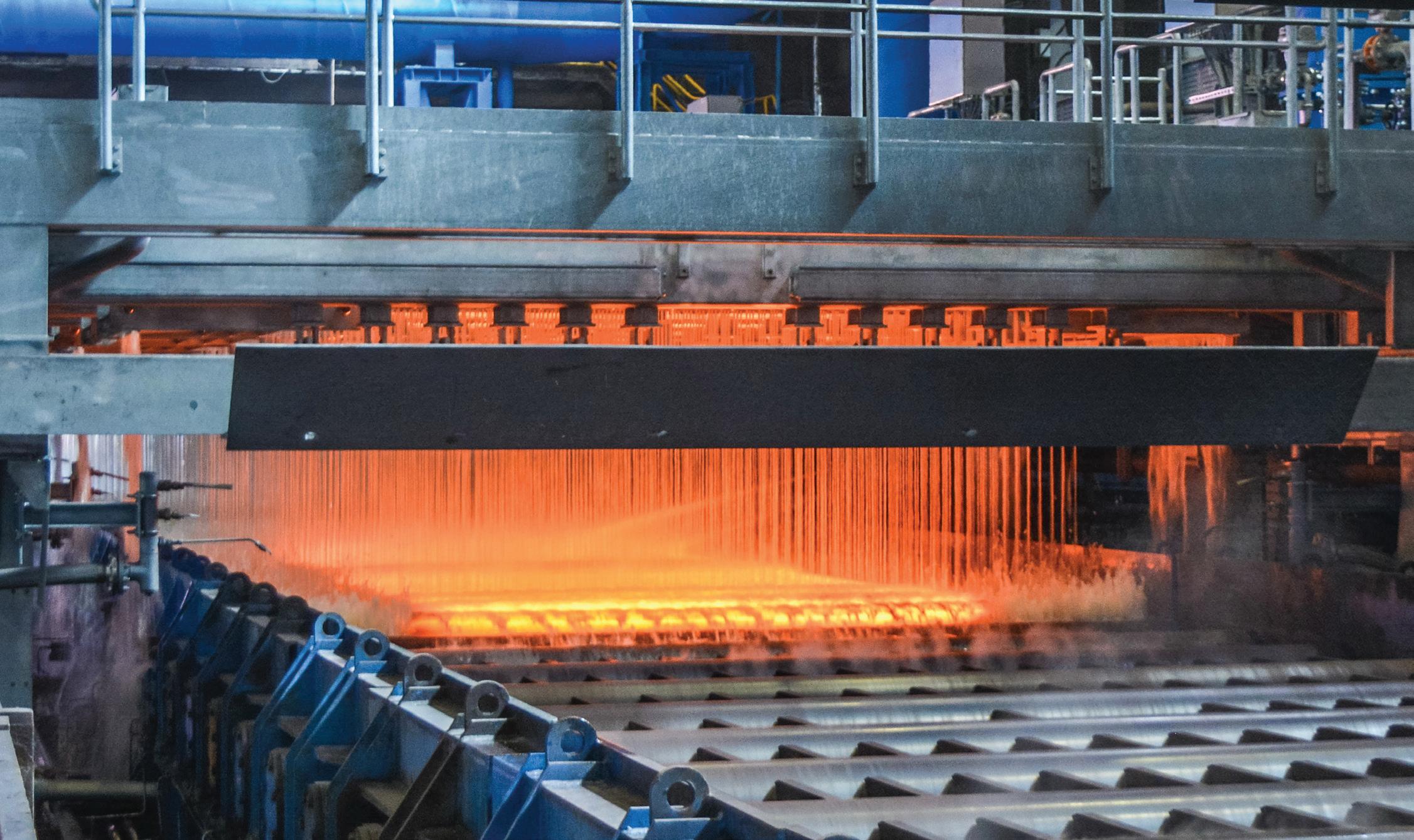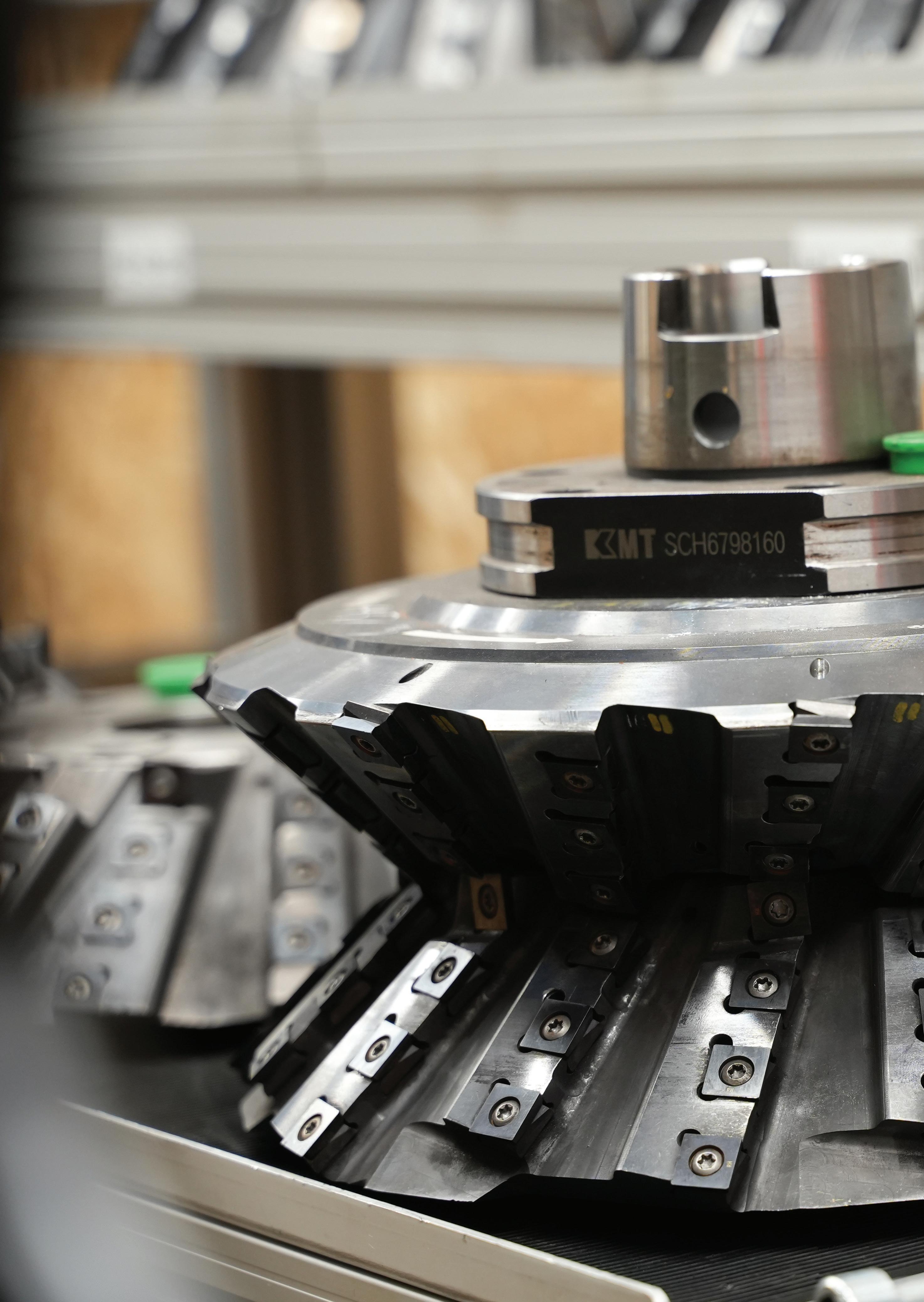
3 minute read
Fatigue Resistance of the Welded Joint
from Weldability Investigations of 120 mm TM+ACC Thick Heavy Plate Steel, designed for Offshore App.
The fatigue resistance of the welded joint of the investigated type with a HI of 50 ± 2 kJ/cm was determined at test temperature minus 10 °С by crack tip opening displacement value δ (δCTOD) along the most brittle area of HAZ: the grain coarsened zone (GCHAZ) near the fusion line. Fig. 10 shows a characteristic graph of crack opening, which characterizes the conditions of crack development up to the moment of critical opening (loss of signal) and the type of a E36 rolled sample with a thickness of 120 mm after the end of the test. At the fracture, five main fracture zones can be distinguished according to the viscous mechanism (marked in Fig. 10b): 1) fracture initiation zone (beginning of crack development); 2) crack development zone; 3) primary zone of rupture; 4) secondary zone of rupture; 5) fracture contraction zone.
GCHAZ of the investigated steel grade is characterized by average values of the maximum applied load before fracture crack development at the level of FmCTOD = 125-130 kN and a δ CTOD average value of 1.36 mm. The results obtained testify to the high fatigue resistance of the welded joint [ 15 ].
Advertisement

The microstructure and mechanical properties of welded joints of low-carbon micro-alloyed heavy plate steel of E36/S420ML quality grade with a thickness of 120 mm produced at NLMK DanSteel facility by thermomechanical treatment followed by accelerated cooling were studied.
The chemical composition, the technology for the production of heavy steel plates, as well as technological regimes and welding procedures were developed at NLMK DanSteel.

The investigated welded joints with a heat input of 15 and 50 kJ/cm are characterized by:
• Low level of carbon equivalents: Ceq ≤ 0.33%, Pcm ≤ 0.14%, CET≤ 0.21%;
• The absence of critically brittle microstructural components in the investigated heat-affected areas;
• Strength at the level of: ReH = 397-415 MPa; Rm = 503-504 MPa;
• Impact energy in the transverse direction at -40 °C in the most critical areas of the welded joint, not lower than 120 J;
• High fatigue resistance of the GCHAZ zone with a δCTOD average value of 1.36 mm;
The results of the study and testing of welded joints were used to successfully passed weldability certification tests of heavy plate rolled products of E36/S420ML quality grade with a maximum thickness of 120 mm in accordance with DNV-OS-B101-2021, ABS Rules for Materials and Welding, with acceptance and verification by maritime classification societies DNV and ABS.
1. DNVGL-CP-0243. Class Programme. Approval of Manufacturers. Rolled steel products – nonstainless steel. – Oslo. 2019. 33p.
2. DS/EN 10225-1:2019. Weldable structural steels for fixed offshore structures – Technical delivery conditions – Part 1: Plates. – Brussels. 2019. 64p.
3. Goli-Oglu E., Greisen Z. Production of TMCP steel plates up to 100 mm (Part 1) // Stahl und Eisen. 2020. No5-6. P. 49 – 53.
4. Kazuhiro K. Progress in This Decade and Future Prospects of Welding Technologies on Steel Plates and Pipes // NIPPON STEEL & SUMITOMO METAL TECHNICAL REPORT. No. 119. 2018. 7 p.
5. Goli-Oglu E. Heavy plates for offshore wind // Stahl und Eisen. 2022. Vol. 06. P. 51 - 57.
6. Major Capital Project: Big Foot // Chevron Corporation: [official site]. 2022. URL: https://www.chevron.com/-/media/chevron/projects/documents/BigFoot-Factsheet.pdf (Accessed 2022-05-31).
7. Sarkits I., Bokachev Y., Goli-Oglu E. Production of heavy plates on the rolling mill 4200 NLMKDanSteel A/S // Stahl und Eisen. 2014. No4. P. 57 – 61.
8. Gorni A., Silveira J. Accelerated Cooling of Steel Plates: The Time Has Come. // Journal of ASTM International. 2008. Vol. 5, No. 8. Р. 358-365.
9. Bodude M., Momohjimoh I. Studies on Effects of Welding Parameters on the Mechanical Properties of Welded Low-Carbon Steel. // Journal of Minerals and Materials Characterization and Engineering. 2014. No 3. P. 142-153.
10. European Standard 10225. Weldable Structural Steels for Fixed Offshore Structures – Technical Delivery Conditions. Brussels. 2009. 84 p.
11. Amanie J., Oguocha I., Yannacopoulos S. Effect of submerged arc welding parameterson microstructure of SA516 steel weld metal // Canadian Metallurgical Quarterly. 2012. Vol. 51. P 48-57.
12. Liangyun L., Chunlin Q., Dewen Zh., Xiuhua G., Linxiu Du. Analysis of microstructural variation and mechanical behaviors in submerged arc welded joint of high strength low carbon bainitic steel // Materials Science and Engineering: A. 2012. Vol. 558. P. 592-601.
13. Kim Y, Hwang W. High-Cycle, Low-Cycle, Extremely Low-Cycle Fatigue and Monotonic Fracture Behaviors of Low-Carbon Steel and Its Welded Joint. // Materials. 2019. No 12 Vol. 24:4111. 23 p.
14. Lolla T., Babu S. S. ,Lalam S., Manohar M. Сomparison of simulated heat affected zone microstructures of niobium microalloyed steels subjected to multi-pass weld thermal cycles // Proceedings of the International Seminar on Welding of High Strength Pipeline Steels. CBMM and TMS. 2013. P. 281-297.
15. Choi K.-S., Lee S.-H., Chung W.-J., Hwang H.-G., Hong S.-H., Hong, J.-U. Study of Brittle Crack Propagation Welding for EH40 Steel Plate in Shipbuilding Steel // The Korean Society of Manufacturing Process Engineers. Vol. 18. No. 5. 2019. P. 9–16.








